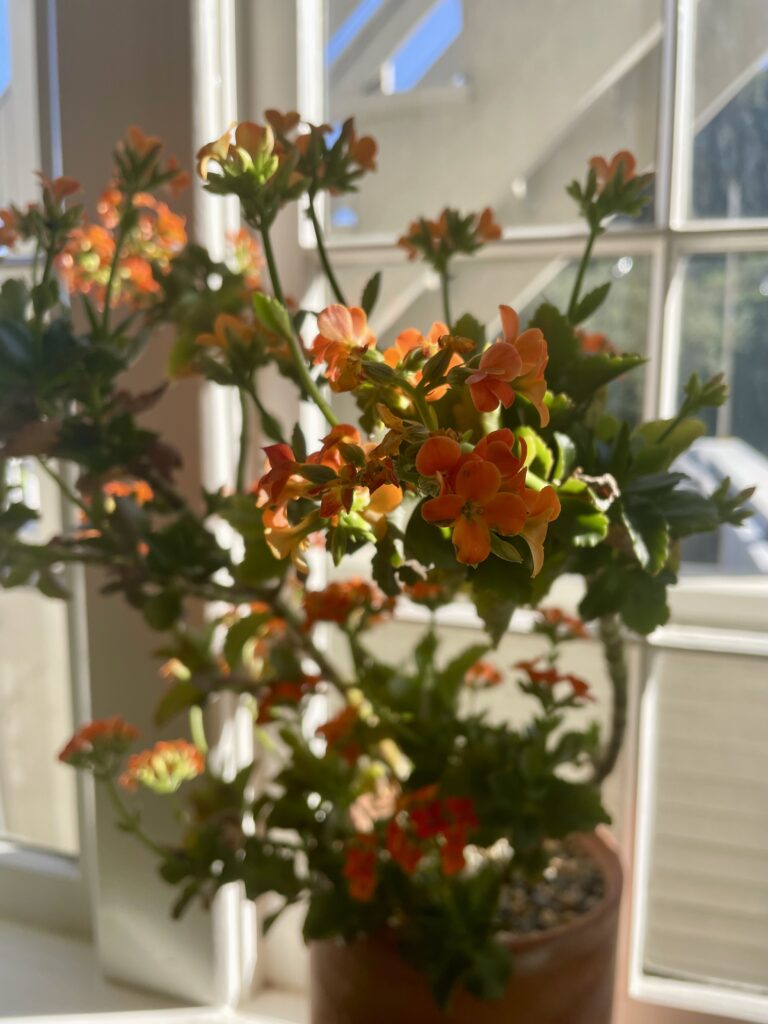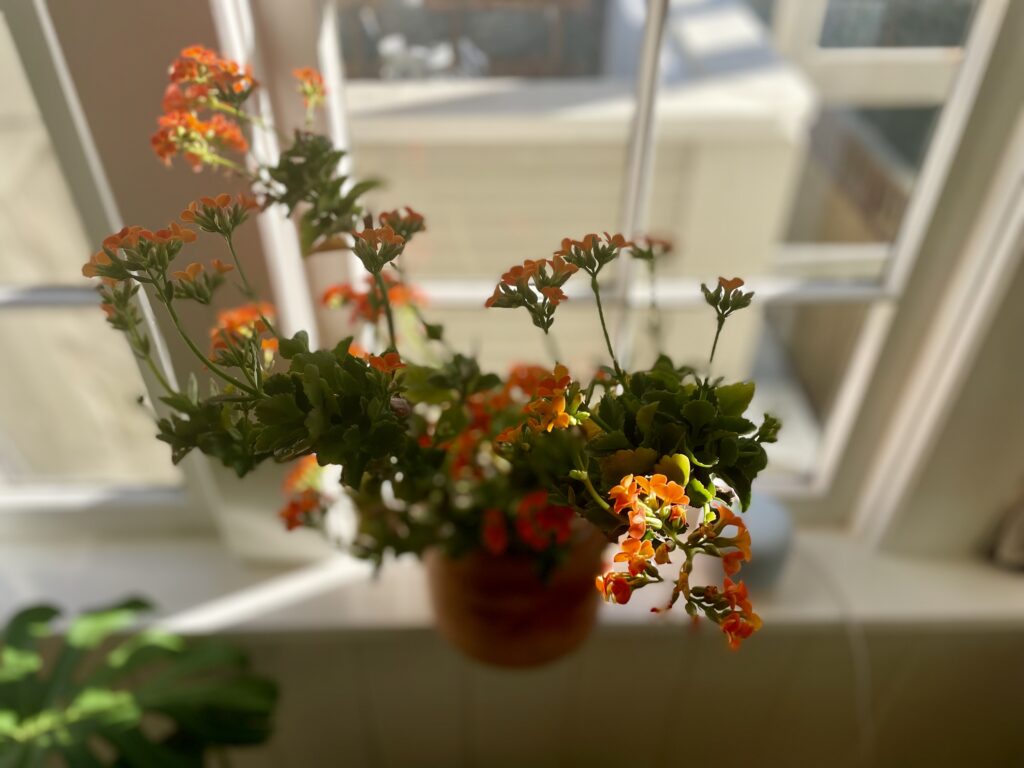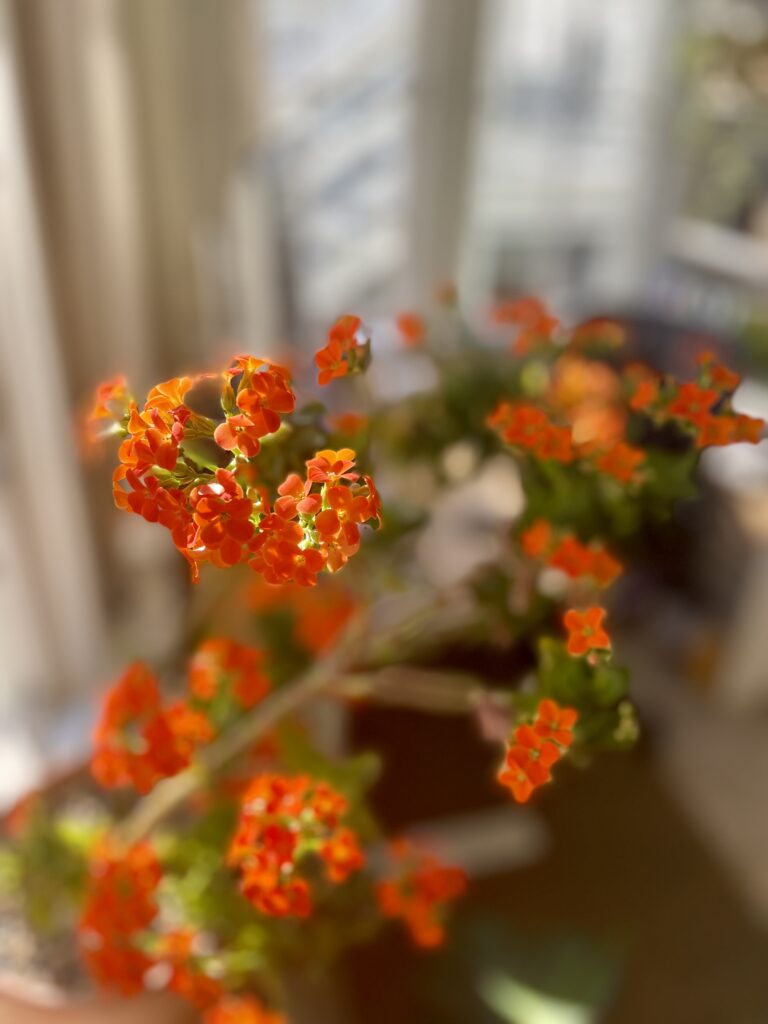
I bought a tiny Flaming Katy (Kalanchoe blossfeldiana) because I was drawn to its bright orange, tiny flowers. The salesperson warned me that most of the year it didn’t flower and looked like a deep green succulent you might find near an ocean coastline. This has not been my experience with this spectacular flowering succulent. Nearly every time its dozens of orange flowers dry up, it immediately grows new buds to replace them. Here’s what I’ve learned about growing a thriving, flowering Flaming Katy in the last four years of never needing to buy cut flowers:

1. It’s perfect for the forgetful plant parent.
I can’t underscore enough how low-maintenance my Flaming Katy has been. If you want your space to be greener but worry you’ll forget to water new plants, your options aren’t limited to stubby little cacti or a basic spider plant. My Flaming Katy is in the half bath at the back of my apartment and I water it when I remember it’s there. Which leads me to my next point…
2. It’s a zombie.
Due to underwatering, I’ve convinced myself I’ve killed this plant twice. Its stalk appeared fully brown and dried-out and I was ready to compost it. As a last-ditch effort, I watered my Flaming Katy all the way through and pruned some of its most shriveled branches back. Both times, it’s come back bushier and more vibrant than ever. When I say this plant is “low-maintenance,” what I really mean is that it’s insanely resilient.

3. Reserve a west- or east-facing window.
My Flaming Katy has thrived in a south-facing window with frosted glass (bright, indirect sunlight), but placing yours 1-2” from a west- or east-facing window should work just as well. To ensure you’ve picked the right spot, water it through and watch its leaves for a couple weeks. If they start to become crispy or brown at the edges, move your Flaming Katy slightly back from the window.

4. Watch its leaves.
Because the Flaming Katy is a succulent, it stores water in its thick, fleshy leaves. This means they’re a great indicator of when to water your plant. Instead of adhering to a strict watering schedule, I water my Flaming Katy when the topsoil is dry and its leaves begin to look slightly less supple and full. During the winter, this generally means I water it once every two weeks, allowing water to run through its soil and pot and drain completely before I place it back in the bathroom window.
5. Prune it frequently.
This is only a guess, but I think my Flaming Katy has survived for as long as it has because I’m diligent about pruning back parts of the plant that are suffering. Remember, every inch of a plant requires some energy to maintain, so when you trim a leaf or a flower, you’re freeing up some energy for it to allocate to other parts of itself. Flowers, especially, require extra energy for a plant to maintain, so as soon as new blossoms start to dry and fade, it’s a good idea to cut those dried blossoms back.

6. Repot and fertilize in the spring.
While my Flaming Katy hasn’t signaled needing much in the way of high-touch care, it always responds brilliantly when I do decide to give it extra TLC. As I mentioned above, being a flowering plant requires extra energy, which means maintaining a balance of adequate sunlight, water, and nutrient-rich soil. The best time to replenish the nutrients in your plant’s soil is during its growing season in the spring or early summer (typically right after a bloom).
If your houseplant collection is feeling a little too green, the Flaming Katy is the perfect plant for you. While my plant’s flowers are fluorescent orange, you can find Flaming Katys that bloom in nearly every color of the rainbow. The only thing more delightful than an explosively colorful succulent is an explosively colorful succulent that requires almost no work to maintain.
The post 6 Tips to Grow a Beautiful, Flowering Flaming Katy appeared first on Smart Plants.
